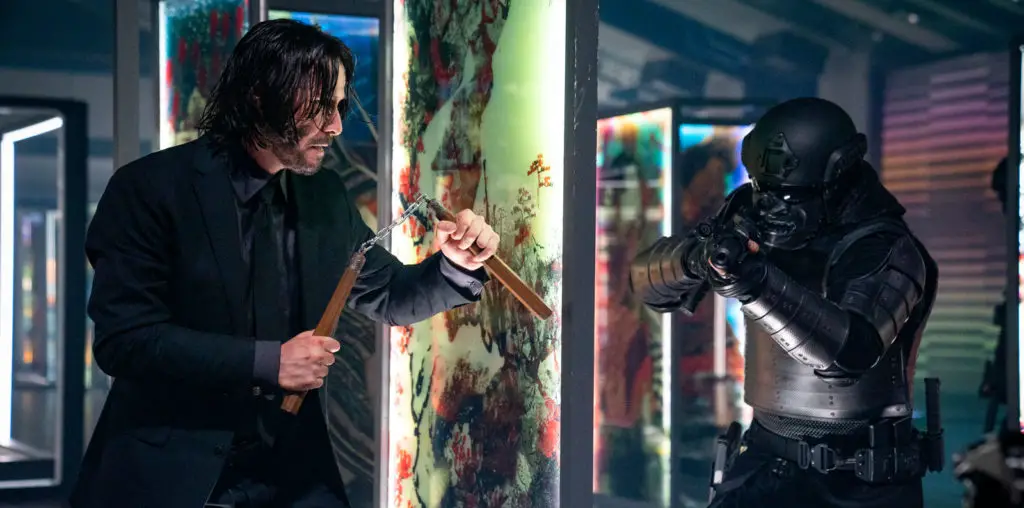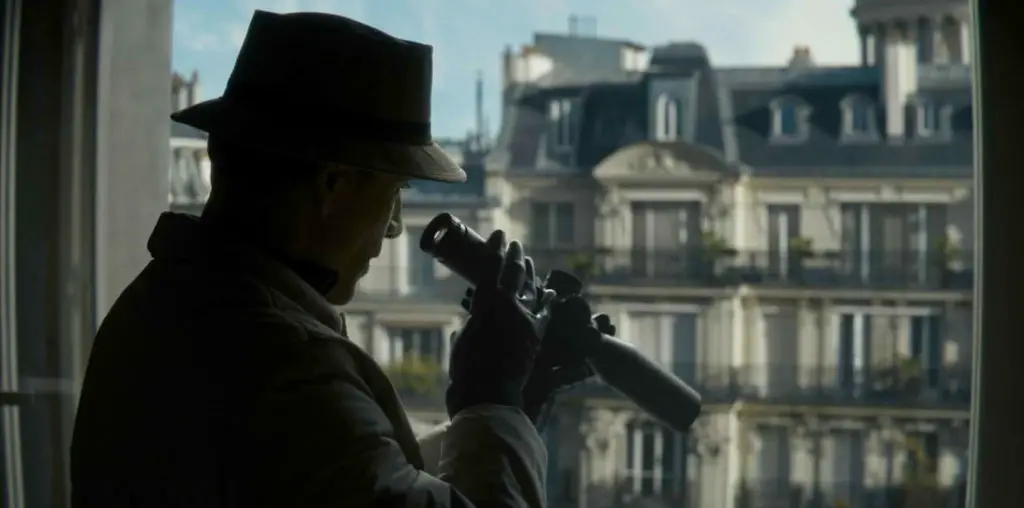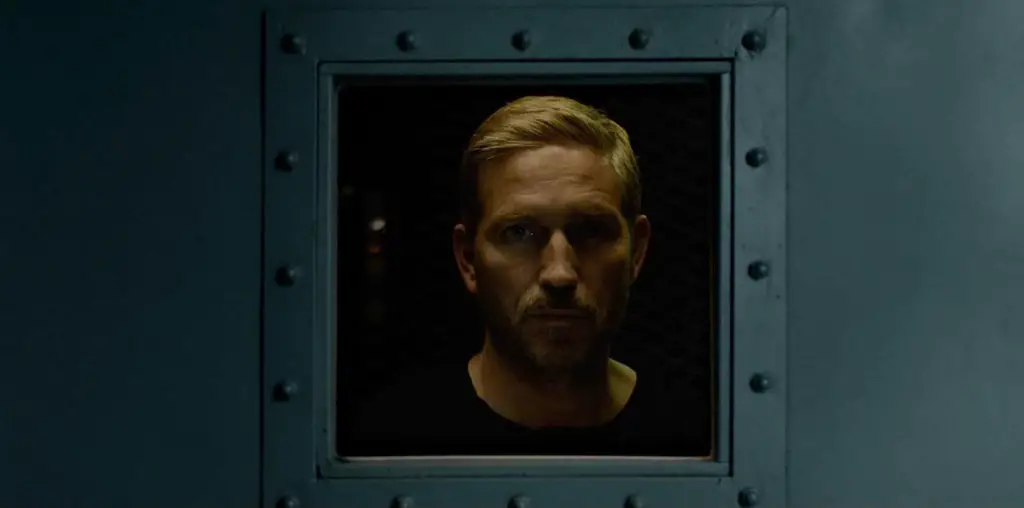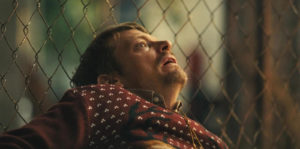
The “silent” part of Silent Night is literal. The film features little-to-no dialogue (maybe two lines) for the hour-forty run-time. It’s the latest offering from Hong Kong action pioneer and influential filmmaker John Woo, promising a return to the ballads of bullets seen in his classics like A Better Tomorrow, The Killer, and Hardboiled. But unlike many of his gun-fu epics, Silent Night follows everyman, Brian, portrayed by Joel Kinnamon, instead of seemingly bullet-proof cops on the noir streets of Hong Kong. Brain’s story begins just after the death of his young son in a gang-related shooting; a stray bullet ends his son’s life on Christmas day. After pursuing the gang members responsible, Brian is shot through the throat, ending his ability to speak.
After the initial chase sequence and Brian’s near-fatal shooting, Brian sinks into a deep depression. He abuses alcohol trying to cope and becomes estranged from his wife, Saya (Catalina Sandino Moreno). It’s not until he begins to think back on his son that he feels something for the first time in a long time: a desire for revenge. A tactical training montage commences as Brian marks December 24th as the day he will “kill them all.”
Characters in Silent Night are very one-note. Brian has some emotional flashbacks of his son, but the majority of the film is the build-up to a massive night of bullet-riddled revenge. The strong silent protagonist works for the film and even pays some homage to Le Samourai (a film Woo often has listed among his favorites). Yet the lack of dialogue from other characters seems gimmicky and separates us from the developing story. It’s an intriguing gimmick. But it only sometimes works and often works against any emotional payout in the story.
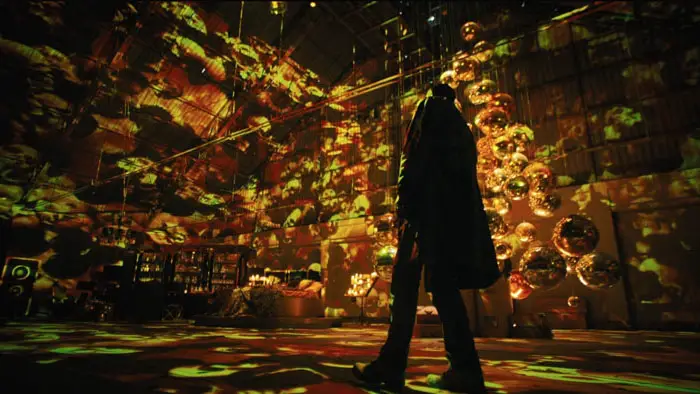
“…a stray bullet ends his son’s life on Christmas day.”
Juxtaposing jolly Christmas music with great violence works well for Silent Night and is often when the film is most fun. However, in moments centered around gang culture, the pounding bass beats and electronic take the Christmas flair out of the Christmas-themed shootouts. Having a silent assassin film set at Christmas is precisely the kind of over-the-top premise you want in an over-the-top John Woo flick, but the differences in the score are enough to make the overall vibe disconnected. It’s a minor hangup. But one that stands out, especially when the film centers so much around the Christmas meets R-rated violence foundation.
Ultimately, John Woo’s action films are all about action. The final gunfight is fantastic, and the filming of the stairway shootout is enough to remind everyone of Woo’s days of Hong Kong cigarette-smoking copes with Akimbo pistols and seemingly unlimited ammo. There is a ton of time spent getting to the climatic fight, but the film does deliver the same satisfying action seen in Woo’s past and by the legions of directors influenced by him.
Managing expectations is crucial with Silent Night. Go into the film expecting Chow Yun-fat era John Woo, and you will spend a lot of time waiting between the opening car chase and the last twenty minutes of bullet parade pleasure. The premise and plot of Silent Night are cool but fall apart when you think about it too much. But so does Face/Off, and it helped put Woo on the map in the United States. Silent Night could be a video store gem in the late ’90s or early 2000s. Imagine describing to your friends a no-dialogue revenge run-in-gun film directed by John Woo. Yet Silent Night is held back by its time. In 2023, we’ve seen tons of Woo inspirations and imitators; even in his Hong Kong days, Woo could create action-filled cinema with some emotional resonance, but Silent Night can’t keep up. The final battle and stairway shootout save the film, but don’t expect the wall-to-wall action seen in John Wick.
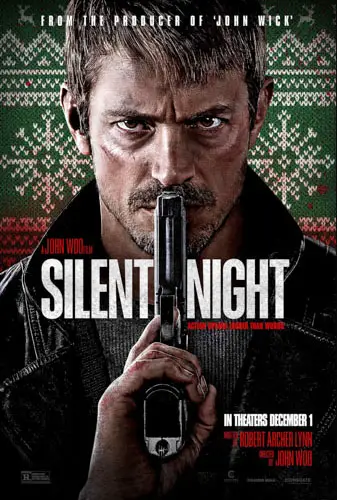
"…does deliver the same satisfying action seen in Woo's past..."
